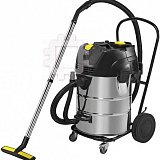Karcher NT 75/2 AP ME TC: instruction
Manual for Karcher NT 75/2 AP ME TC

NT 65/2 Ap
NT 75/2 Ap Me Tc
NT 65/2 Ap
Deutsch 6
English 12
Français 18
Italiano 25
Nederlands 31
Español 37
Português 43
Dansk 49
Norsk 55
Svenska 61
Suomi 67
Ελληνικά 73
Türkçe 80
Русский 86
Magyar 93
Čeština 99
Slovenščina 105
Polski 111
Româneşte 117
Slovenčina 123
Hrvatski 129
Srpski 135
Български 141
Eesti 148
Latviešu 154
Lietuviškai 160
Register and win!
Українська 166
www.kaercher.com
59648610 08/12

2

3

4

5
Annotation for Karcher NT 75/2 AP ME TC in format PDF
Top 10 manuals
100.00
NZXT HALE90 1000W99.99
Samsung SM-R38099.97
AEG BSB 18C99.97
Dell 2700W99.97
Smeg KSEC70X99.96
Beurer HDE 4099.96
Pyramida KH 50 v.299.96
MSI CSM-H81M-P3299.96
AEG HR 562799.95
Melissa 640-048




